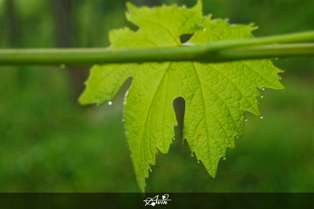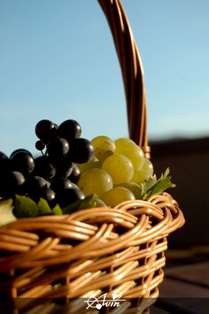 The rich tradition of winemaking in the Vipava Valley goes back to the Roman times, when the valley became the chief thoroughfare for Roman army campaigns and trade routes.
In the deed of gift from emperor Otto III to the Church of Aquileia from 1001, the Vipava River (Wipaum) is first mentioned with its current name that still marks the Vipava Valley, its winegrowing district and the town Vipava itself.
The rich tradition of winemaking in the Vipava Valley goes back to the Roman times, when the valley became the chief thoroughfare for Roman army campaigns and trade routes.
In the deed of gift from emperor Otto III to the Church of Aquileia from 1001, the Vipava River (Wipaum) is first mentioned with its current name that still marks the Vipava Valley, its winegrowing district and the town Vipava itself.
The Vipava Valley was at that time divided between the domains of various counts and the Church of Aquileia.
This division influenced the subsequent division of the Vipava Valley between the provinces of Carniola and Gorizia in the 16th century.
Vines were then grown in plantings at the edges of fields, on stakes or mulberry and other trees and on terraces and inclined terrain.
From available sources, it is unfortunately not apparent which grape varieties exactly were cultivated in the Middle Ages.
As for the wine, there is some information in the Avstrijska rimana kronika (Austrian Rhyming Chronicle) written by Otokar.
The writer of this chronicle, while describing the defeat of the Venetians at the hands of the allies of the Aquileian Patriarch in the late 13th century, mentions seventeen varieties of wine among the spoils seized from the defeated, which include Ribolla, Malvasia, Pinela, Zelen and Pikolit.
In 1528, the emperor Ferdinand I separated the Vipava Valley dominion from the land of Gorizia and annexed it to the Duchy of Carniola.
During these times, a lively wine trade was already underway in the region.
In Janez Vajkard Valvasor's work the Glory of the Duchy of Carniola published in 1689, the famous historian writes favourably of the winegrowing practices in the Vipava Valley.
During the end of the 18th and the start of the 19th century, the agricultural and winegrowing trade in the Vipava Valley was well developed given the circumstances and wines from the Vipava Valley were prominent throughout the Austro-Hungarian Empire.

The winegrowing branch then experienced accelerated development in the latter half of the 19th century as well.
Following the fall of feudalism in 1848 and the completion of the railway in 1857, life in the Vipava Valley changed considerably.
The railway took traffic away from the valley as horse carts were being gradually phased out as a means of carrier transport.
The inhabitants of the Vipava Valley were left on their own in facing the newly arisen difficulties.
More trouble appeared in the form of the grape phylloxera epidemic in 1888, which decimated the vineyards of Vipavska as it did all across Europe.
These problems led towards the association of winegrowers into co-operatives that attracted producers of wine on the basis of economic and social interests.
Under the leadership of the Vipava Valley dean, the local winegrowing co-operative was established in 1894 as the first of its kind in Carniola.

The first wine fair took place in Vipava in 1904.
In 1909, the local agricultural newspaper Kmetovalec (Farmer) published an article with the insightful title “Winegrowers of the Vipava Valley, Graft Zelen!” that recounted the claims of the Carniolan wine supervisor Skalicky, who stated that the variety Zelen was highly sought after in Prague.
Up until the First World War, winegrowing advanced in the Vipava Valley in spite all of its difficulties and brought constant improvement in the quality of wine. After the war, circumstances deteriorated somewhat, in part also compounded by the catastrophic frost of 1929.
The surfaces of vineyards were on the decrease, a trend that continued until the sixties of the previous century, when the renewal of public and later the complex renewal of private vineyards began.
Between 1965 and 1990, over 450 hectares of vineyards were renewed in the Vipava Valley.
Individual winemakers achieved increasing recognition.
In 1991, the Andlovic Winery used all their produce for their own production of wines.
In its location and geographical properties, the Vipava Valley is a characteristically transitional valley nestled between the Trnovo plateau to the north and the Karst to the south.
It is a lowland situated between 45 and 300 m above sea level and comprises one of Slovenia’s larger regions.
The Vipava Valley is one of the windiest regions of Slovenia, known for its strong north-east wind Burja that reaches speeds well above 100 km/h, with individual gusts up to 240 km/h.
The Vipava Valley winegrowing district consists of 2,100 ha of vineyards and is a constituent part of the 7,055 ha large Slovenian wine region Primorska.
Good fertility of the soil is ensured by the marine sediment of flysch in alternating layers with sandstone as well as the Sub-Mediterranean climate with its hot, dry summers and mild winters.
| Average annual temperature in °C | Average temperature in the growing season in °C | ||||||
| Tmax. | Tmin. | Tpovp. | Tmax. | Tmin. | Tpovp. | ||
| 17,0°C | 7,5°C | 11,8°C | 22,6°C | 11,7°C | 16,5°C | ||
(Source: Ministry of the Environment and Spatial Planning – Environmental Agency of the Republic of Slovenia)
The first information on the varieties of Vipavska and their characteristics are collected in the book Vinoreja (Winegrowing) by Matija Vertovec from 1845. He mentions by name 18 “noble” white and 16 “less noble” white varieties, wherein Pinela and Zelen are counted among the noble varieties.
PINELA
Wine from this variety is of a yellowish colour.
On the nose, it has a distinctive, gentle and varietal fruity and flowery aroma.
The flavour is full, very pleasant and harmonious.
The wine’s best traits are its freshness and drinkability as the variety normally contains higher amounts of acids.
The wine is best made young and fresh, while appropriate maturing brings out its noble, riper aromas. Alcohol content and extract are of medium level.
ZELEN
The wine is of a straw colour with accented greenish tones. Zelen has a gentle fragrance, with expressed fruity notes of apple and pear.
On the nose, it is rich, with an expressed varietal aroma and very pleasant.
Zelen is counted amongst semi-aromatic varieties as it gives wine with a rich harmonious and pronounced varietal flavour.
The aroma is complex and not easily compared with other aromatic profiles.
The fullness of the flavour attests to the rich composition of the extract, which shows on the palate through the extended release of sweet-sour sensations in a good balance.
The varieties Zelen and Pinela are protected indigenous varieties of Slovenia.
PIKOLIT
The colour of Pikolit wine is golden yellow.
Its bouquet is reminiscent of over-ripe apricots, dried fruit and honey. Its flavour ranks it among high extract, rich and harmonious wines.
If the wine is made from dried grapes, the colour tones will lean towards brownish.
Wine is a gift of nature and the noblest drink to a cultured man. Just as men go through periods of their life, so does wine. Fruit ripens on the vines; wine is born during fermentation, reaches its peak of vigour and may crumble if aged for too long. Temperate enjoyment of wine helps rekindle our joy and goodwill and chases away worries; it gives strength to the healthy and solace to the sick.